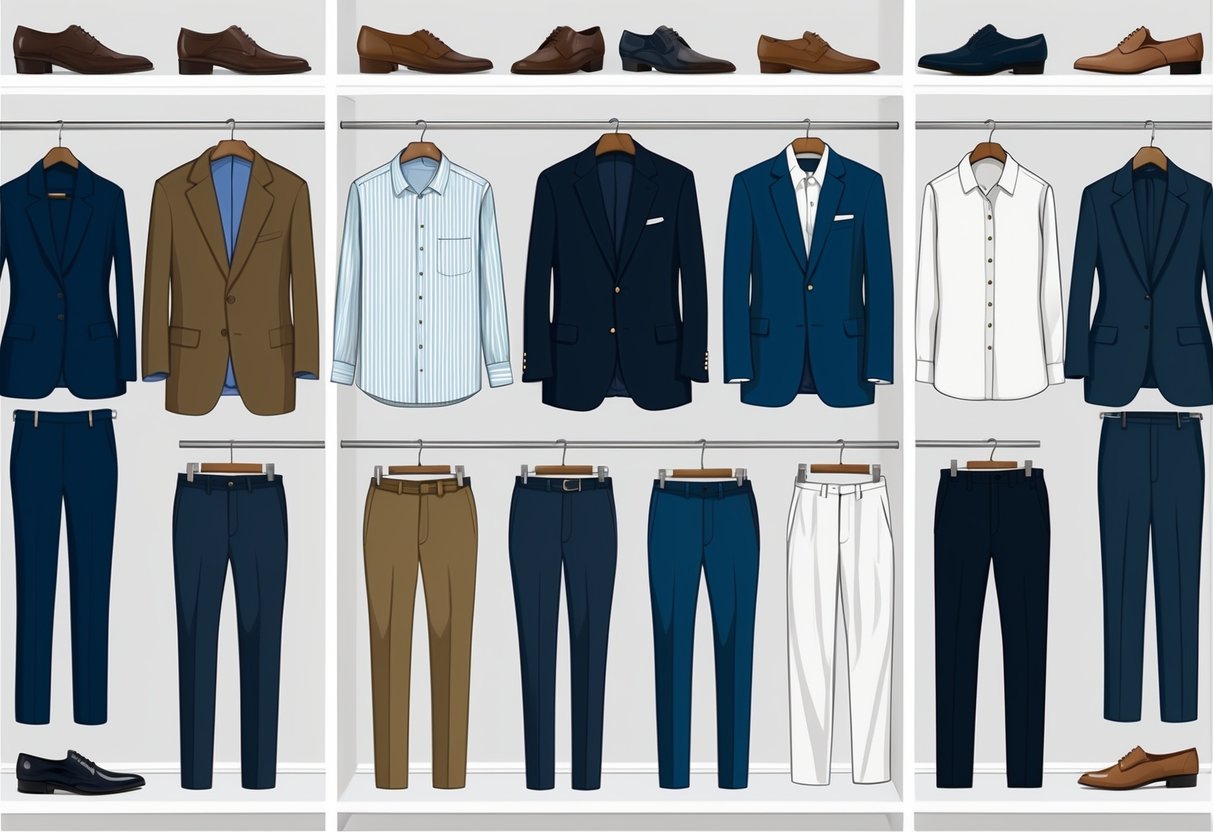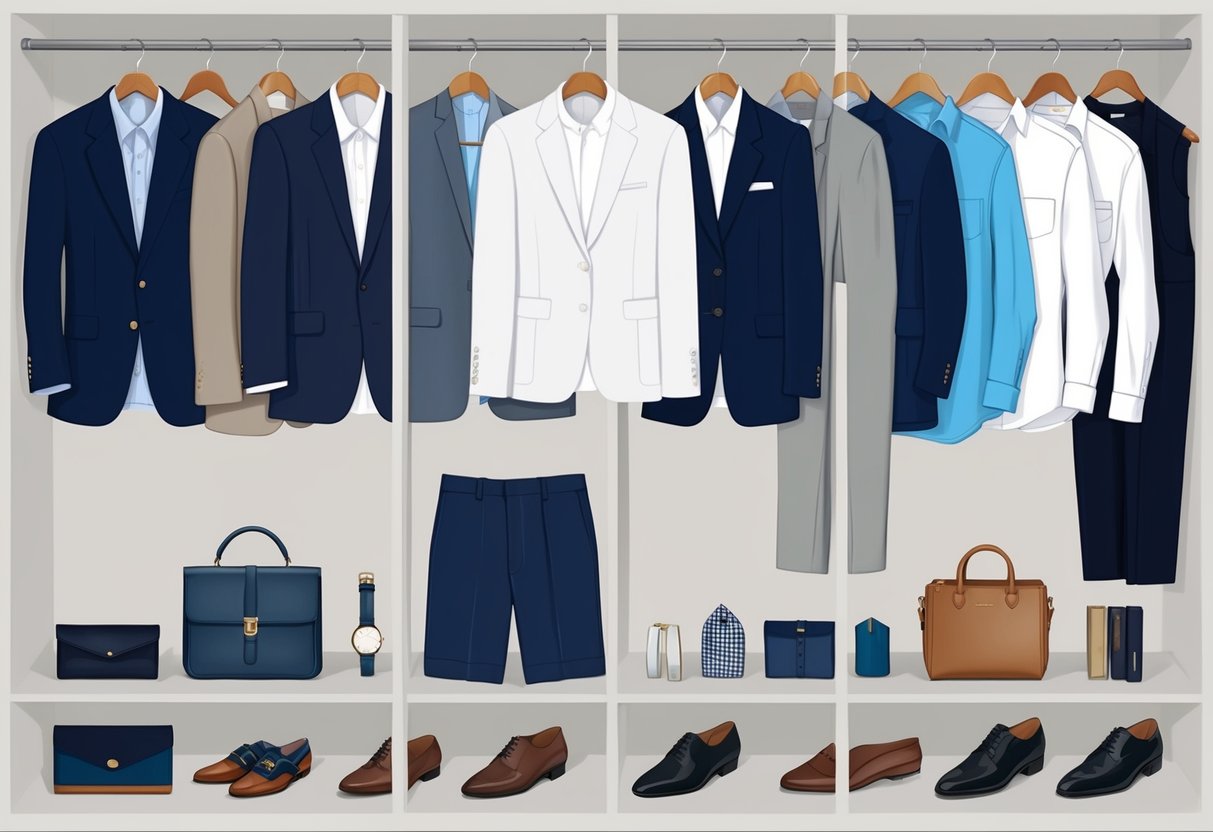
Creating a functional and stylish workwear wardrobe doesn’t have to be complicated. The secret formula is about building a core collection of versatile, mix-and-match pieces that work together seamlessly for any office setting.
With the right approach, anyone can develop a practical yet polished wardrobe that supports both busy mornings and professional expectations.
By relying on timeless, interchangeable basics and carefully selected accents, it becomes easy to rotate between casual and formal looks without sacrificing comfort or style. Modern wardrobe systems such as the Outfit Formulas method simplify the entire process, making it achievable for every body type, season, and budget.
This eliminates guesswork and streamlines daily decision-making for a confident start to each day.
Understanding which key items to invest in, and how to coordinate them, is essential for maximizing both efficiency and personal expression in workwear.
Understanding the Foundations of a Functional Workwear Wardrobe

A functional workwear wardrobe succeeds when each piece earns its spot. Key elements such as versatility, quality essentials, and a thoughtful evaluation of personal wardrobe needs distinguish the most efficient and stylish work closets.
The Importance of Versatility
Versatility ensures a wardrobe adapts to changing demands. A range of office-appropriate outfits hinges on items that transition seamlessly between meetings, after-work events, and casual business days.
Selecting versatile staples—such as classic blouses, tailored trousers, and blazers—allows for numerous outfit combinations. By building on core pieces, it becomes easy to layer, swap, or accessorize styles to suit both formal and informal settings.
This approach is central to mix-and-match wardrobe systems that maximize outfit potential with a smaller clothing selection.
Before purchasing new garments, individuals should consider how each item will pair with what’s already owned. Neutral colors, durable fabrics, and timeless cuts help ensure that core items won’t fall out of rotation quickly.
Selecting Quality Building Blocks
Quality wardrobe building blocks create a reliable foundation for workwear. Investing in durable, well-made essentials such as blazers, white shirts, and structured pants results in a closet that maintains both style and shape after repeated wear.
Look for details like sturdy stitching, high-quality fabric blends, and tailored fits. These traits are crucial since work attire often faces regular laundering and long hours of use.
The foundation might start with a simple formula, like blouse + layering piece + tailored pants, which can function as the base for almost any professional setting. For further guidance, lists of must-have wardrobe basics can offer a clear starting point.
Classic colors—think black, navy, gray, or white—work as anchors for building additional looks. A few standout accessories and shoes can introduce a touch of personal style while keeping the core selection focused and practical.
Evaluating Wardrobe Needs
Assessing wardrobe needs starts with examining work environment expectations, climate, and individual preferences. Some roles require formal business attire, while others accept business casual or even creative dress codes.
Make a checklist of daily tasks, frequent meetings, and workplace events that influence outfit choices. For those in regions with distinct seasons, split the wardrobe into clear seasonal sections.
For example, use light layering pieces for spring and summer, and heavier, full-length options for autumn and winter as discussed in practical wardrobe advice such as foundations of a work wardrobe.
Tracking what is worn regularly over a few weeks helps identify any recurring gaps or surplus items. This data-driven approach ensures every piece added to the wardrobe serves a defined function and supports overall style goals.
Choosing the Right Fit for Comfort and Professionalism
Selecting appropriate workwear requires finding a balance between a flattering fit, all-day comfort, and maintaining professional standards. The right choices allow individuals to move freely, look put-together, and focus on their work without distraction or discomfort.
Tailoring for Flattering Silhouettes
A well-tailored garment enhances a professional appearance and boosts confidence in the workplace. Suits, blazers, trousers, and skirts should lightly skim the body rather than cling or hang loosely.
Not only does tailoring sharpen your silhouette, but it also prevents distractions caused by adjusting ill-fitting clothes during the day. Key items like dress shirts, blouses, and jackets benefit from darts, proper sleeve lengths, and adjusted hemlines.
This ensures garments sit correctly on the shoulders and create clean lines from neck to hem. Regular visits to a tailor can solve common fit issues, such as baggy waists or sleeves that are too long.
Individuals looking to streamline their closet should prioritize versatile pieces that fit well off the rack or require only minor adjustments. A focus on fit ensures that even basic items can look polished and professional.
Consider guidelines from workwear experts for a wardrobe that stands out for all the right reasons.
Prioritizing Comfort in Fabrics and Styles
Comfort is critical when assembling a work wardrobe, as employees spend extended hours in their clothes. Selecting breathable materials such as cotton, linen blends, and stretch wool provides airflow and flexibility throughout the day.
These fabrics move with the body and regulate temperature, making them suitable for various climates and seasons. Styles like relaxed-fit trousers, structured knits, and tailored shirting give a smart appearance without limiting movement.
Details such as flex waistbands and side vents add extra comfort without altering a garment’s professional look. People in dynamic environments may benefit from wrinkle-resistant or moisture-wicking choices.
Employees should also pay attention to layering options for changing temperatures, using light cardigans or blazers that are easy to remove. Investing in high-quality fabrics reduces discomfort and prolongs the life of each piece in the wardrobe.
Balancing Style with Functionality
The most effective workwear blends style with day-to-day practicality. Classic pieces allow for easy coordination, saving time when assembling outfits.
Neutral colors, clean lines, and minimal ornamentation help pieces move seamlessly between different work settings and dress codes. Features like pockets, machine-washable fabrics, and modest cuts maximize usability.
Those responsible for physical tasks can seek garments that combine flexibility with professional detailing. Shirt stays, reinforced seams, and durable closures all contribute to improved performance during a busy workday.
Business casual guidelines often encourage mixing tailored and more relaxed elements. Swapping out casual bottoms for trousers or choosing smart shoes immediately elevates an outfit from informal to office-ready, as described in this workwear guide.
Such functional styling ensures professionals remain comfortable, capable, and polished throughout the day.



